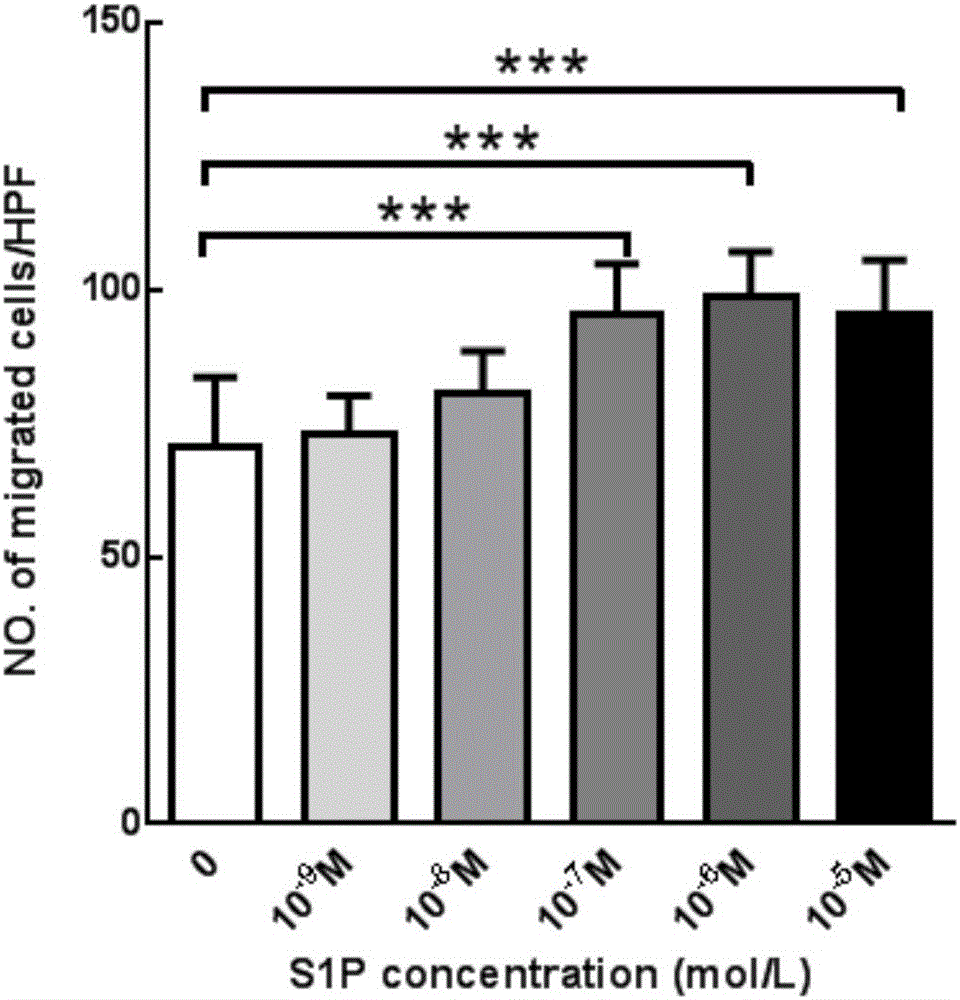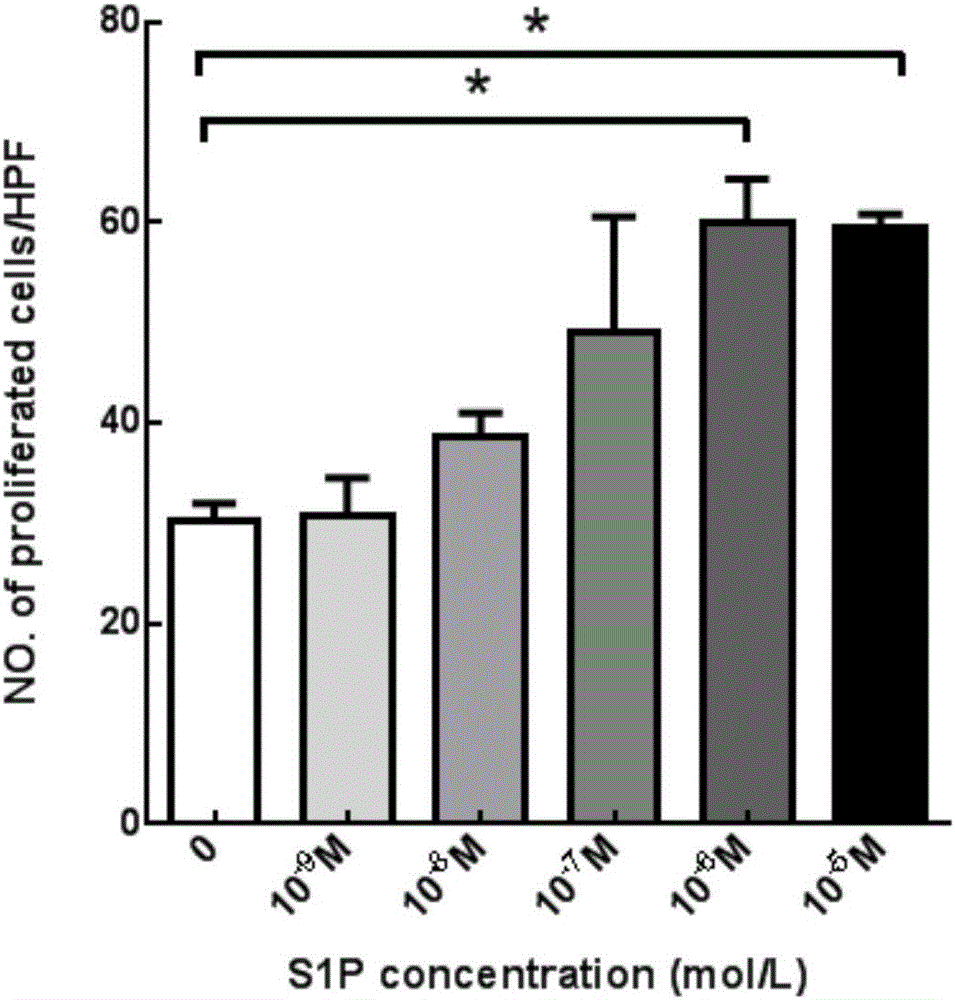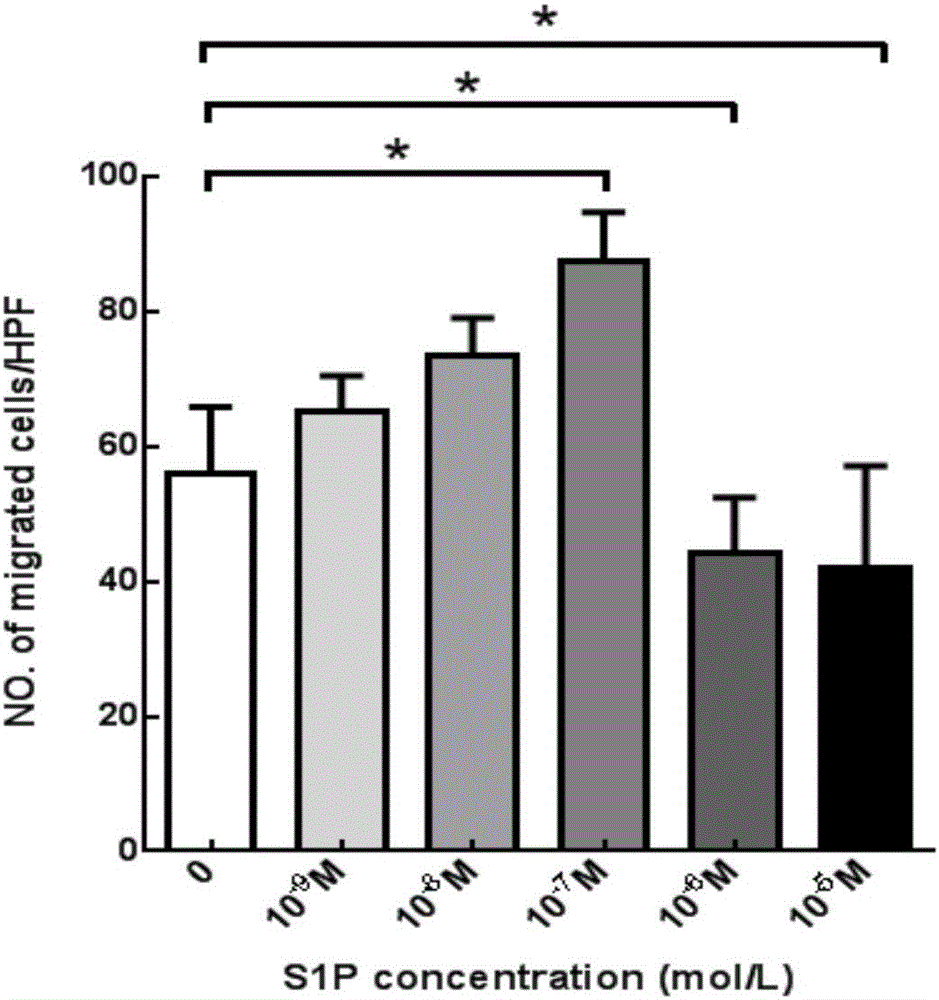PLGA-S1P nanometer material and preparation method of PLGA-S1P nanometer coating stent
A technology of PLGA-S1P and nanomaterials, which is applied in coating, medical science, surgery, etc., can solve the problems of destroying vascular endothelialization, delaying the natural healing of blood vessels, etc., and achieve reduction of medical expenses, huge economic and social benefits, and improvement prognostic effect
- Summary
- Abstract
- Description
- Claims
- Application Information
AI Technical Summary
Problems solved by technology
Method used
Image
Examples
Embodiment 1
[0028] 1. Preparation of PLGA-S1P nanoparticles:
[0029] 1. Dissolve 100mg PLGA5005 in 4ml dichloromethane organic solvent to prepare PLGA dichloromethane solution.
[0030] 2. Dissolve 1mg S1P in 5ml methanol solution to make S1P solution.
[0031] 3. Under the ultrasonic condition of 180w probe, drop the S1P solution (peristaltic pump 20r / min) into the PLGA dichloromethane solution (ice bath), and ultrasonicate for 3 minutes after dropping to form an emulsion.
[0032] 4. Under 180W probe ultrasound, pour 10ml of 2% PVA (30,000-70,000, degree of alcoholysis 87%-89%, Sigma) solution into the emulsion obtained in step 3 above, and ultrasound for 7 minutes (ice bath).
[0033] 5. Under ultrasound with 180W probe, add the emulsion of step 4 dropwise to 50mL 0.1% PVA solution (peristaltic pump 40r / min), and ultrasound for 6min after dropwise addition.
[0034] 6. Rotary steaming at 30°C for 30 minutes.
[0035] 7. Rotate speed 12000r / min, time 10min, clean with deionized water three times. ...
Embodiment 2
[0041] 1. Preparation of PLGA-S1P nanoparticles:
[0042] 1. Dissolve 10mg PLGA7505 in 4ml tetrachloromethane organic solvent to prepare PLGA tetrachloromethane solution.
[0043] 2. Dissolve 1mg S1P in 5ml acetone solution to make S1P acetone solution.
[0044] 3. Under the ultrasonic condition of 180w probe, add 5mL S1P acetone solution (peristaltic pump 20r / min) dropwise to 4ml PLGA tetrachloromethane solution (ice bath), and ultrasonicate for 5min after dropping to form an emulsion.
[0045] 4. Under 180W probe ultrasound, pour 20ml of 5% PVA (30,000-70,000, degree of alcoholysis 87%-89%, Sigma) solution into the emulsion obtained in step 3 above, and ultrasound for 10min (ice bath).
[0046] 5. Under 180W probe ultrasound, add the emulsion of step 4 dropwise to 60mL of 1% PVA solution (peristaltic pump 100r / min), and ultrasound for 8min after dropwise addition.
[0047] 6. Rotary steaming at 30°C for 30 minutes.
[0048] 7. Rotate speed 10000r / min, time 6min, clean with deionized wat...
PUM
| Property | Measurement | Unit |
|---|---|---|
| thickness | aaaaa | aaaaa |
| thickness | aaaaa | aaaaa |
| thickness | aaaaa | aaaaa |
Abstract
Description
Claims
Application Information
 Login to View More
Login to View More - R&D
- Intellectual Property
- Life Sciences
- Materials
- Tech Scout
- Unparalleled Data Quality
- Higher Quality Content
- 60% Fewer Hallucinations
Browse by: Latest US Patents, China's latest patents, Technical Efficacy Thesaurus, Application Domain, Technology Topic, Popular Technical Reports.
© 2025 PatSnap. All rights reserved.Legal|Privacy policy|Modern Slavery Act Transparency Statement|Sitemap|About US| Contact US: help@patsnap.com



